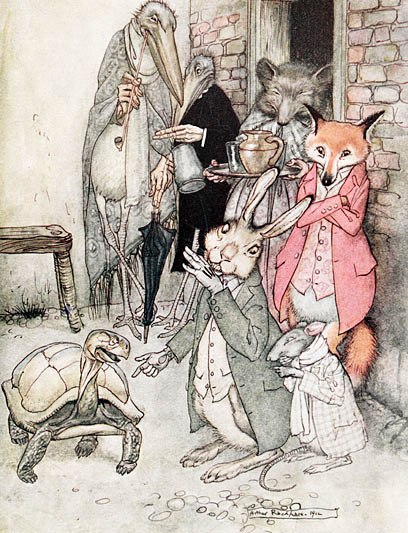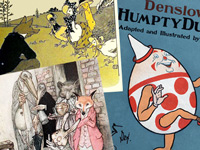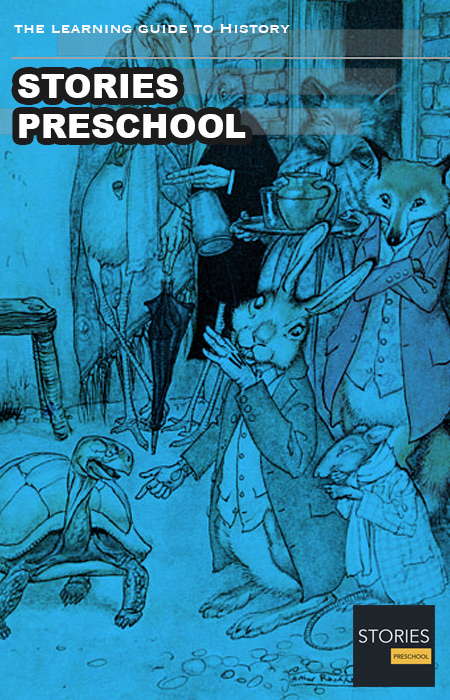The Tortoise and the Hare

The Tortoise and the Hare is one of Aesop's Fables and is numbered 226 in the Perry Index. The account of a race between unequal partners has attracted conflicting interpretations. It is itself a variant of a common folktale theme in which ingenuity and trickery (rather than doggedness) are employed to overcome a stronger opponent.
An ambiguous story
The story concerns a Hare who ridicules a slow-moving Tortoise. Tired of the Hare's boastful behaviour, the Tortoise challenges him to a race. The hare soon leaves the tortoise behind and, confident of winning, takes a nap midway through the race. When the Hare awakes however, he finds that his competitor, crawling slowly but steadily, has arrived before him. The later version of the story in La Fontaine's Fables (VI.10), while more long-winded, differs hardly at all from Aesop's.
As in several other fables by Aesop, the lesson it is teaching appears ambiguous. In Classical times it was not the Tortoise’s plucky conduct in taking on a bully that was emphasised but the Hare’s foolish over-confidence. An old Greek source comments that 'many people have good natural abilities which are ruined by idleness; on the other hand, sobriety, zeal and perseverance can prevail over indolence. When the fable entered the European emblem tradition, the precept to ‘hasten slowly’ (festina lente) was recommended to lovers by Otto van Veen in his Emblemata Amorum (1608), using a relation of the story. There the infant figure of Eros is shown passing through a landscape and pointing to the tortoise as it overtakes the sleeping hare under the motto “perseverance winneth.” Later interpreters too have asserted that the fable's moral is the proverbial 'the more haste, the worse speed' (Samuel Croxall) or have applied to it the Biblical observation that 'the race is not to the swift' (Ecclesiastes 9.11).
In the 19th century and after the fable was given satirical interpretations. In the social commentary of Charles H. Bennett's The Fables of Aesop translated into Human Nature (1857), the hare is changed to a thoughtful craftsman prostrate under the foot of a capitalist entrepreneur. Lord Dunsany brings out another view in his "The True History of the Tortoise and the Hare" (1915). There the hare realises the stupidity of the challenge and refuses to proceed any further. The obstinate tortoise continues to the finishing line and is proclaimed the swiftest by his backers. But, continues Dunsany,
"the reason that this version of the race is not widely known is that very few of those that witnessed it survived the great forest-fire that happened shortly after. It came up over the weald by night with a great wind. The Hare and the Tortoise and a very few of the beasts saw it far off from a high bare hill that was at the edge of the trees, and they hurriedly called a meeting to decide what messenger they should send to warn the beasts in the forest. They sent the Tortoise."LITERATURE FAIRY TALES

Arthur Rackham, The Hare and the Tortoise, illustration line block printed from drawing, from Aesop's Fables. Published by Ballantyne & Co., London, 1912.

Arthur Rackham, The Hare and the Tortoise, illustration line block printed from drawing, from Aesop's Fables. Published by Ballantyne & Co., London, 1912.
( Click image to enlarge)
A fairy tale is a type of short story that typically features folkloric fantasy characters, such as dwarves, elves, fairies, giants, gnomes, goblins, mermaids, trolls, or witches, and usually magic or enchantments. Fairy tales may be distinguished from other folk narratives such as legends (which generally involve belief in the veracity of the events described) and explicitly moral tales, including beast fables. The term is mainly used for stories with origins in European tradition and, at least in recent centuries, mostly relates to children's literature.
Read More » List of Fairy tales »
RESOURCES
This article uses material from the Wikipedia articles "List of fairy tales", "Fairy tale" and "The Tortoise and the Hare", which is released under the Creative Commons Attribution-Share-Alike License 3.0.
© Stories Preschool. All Rights Reserved.






